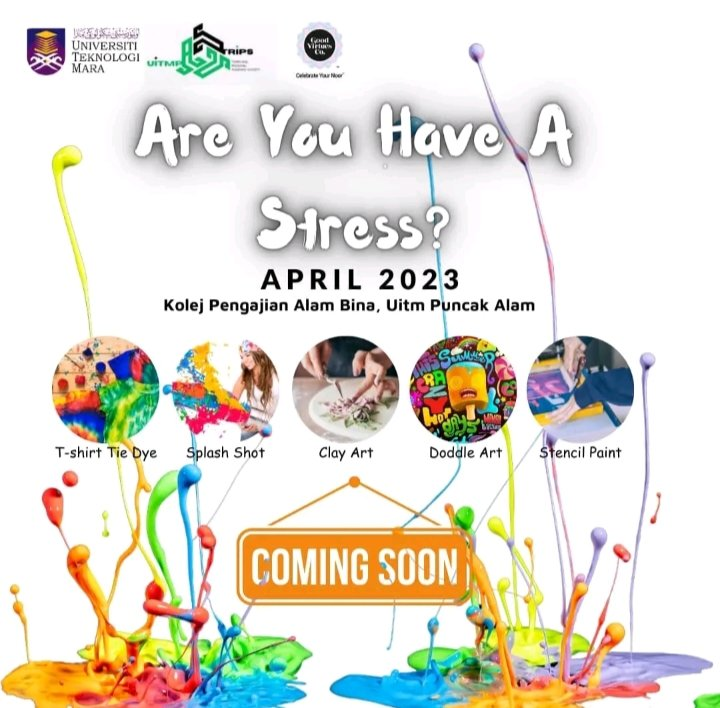Origins and Spread of COVID-19

The COVID-19 pandemic, caused by the severe acute respiratory syndrome coronavirus 2 (SARS-CoV-2), has had a profound impact on the world. Understanding the origins and spread of this virus is crucial for developing effective prevention and control strategies.
Origins of the Virus
The origins of SARS-CoV-2 remain a subject of ongoing scientific investigation. The prevailing scientific consensus points to a zoonotic origin, meaning the virus likely originated in animals and then jumped to humans. The most likely source is believed to be bats, which are known to harbor a wide variety of coronaviruses.
Initial Spread
The first known case of COVID-19 was identified in Wuhan, China, in December 2019. The virus is thought to have spread from an animal source to humans at a live animal market in Wuhan. From there, the virus rapidly spread throughout China and then to other parts of the world.
Factors Contributing to Rapid Spread
Several factors contributed to the rapid spread of COVID-19, including:
- Global travel patterns: The interconnectedness of the modern world, with people traveling frequently across borders, facilitated the rapid spread of the virus to different continents.
- Population density: Densely populated areas, such as cities, provided an ideal environment for the virus to spread quickly among individuals.
- Lack of early detection and containment measures: The initial lack of awareness about the virus and the absence of effective containment measures allowed the virus to spread unchecked.
Mutations and Evolution
Like all viruses, SARS-CoV-2 has undergone mutations since its emergence. Mutations are changes in the virus’s genetic material, which can affect its transmissibility, severity, and susceptibility to vaccines. Some mutations have resulted in variants of concern, such as Alpha, Delta, and Omicron, which have been associated with increased transmissibility and/or immune evasion.
Impact of COVID-19 on Society

The COVID-19 pandemic has had a profound and multifaceted impact on society, affecting nearly every aspect of human life. From healthcare systems to economies, education, and social interactions, the pandemic has left an indelible mark on the world.
Impact on Healthcare Systems
The pandemic placed immense strain on healthcare systems worldwide. Hospitals and clinics were overwhelmed with patients, leading to shortages of beds, medical equipment, and healthcare workers. This strain was particularly acute in countries with already fragile healthcare systems.
“The COVID-19 pandemic has exposed vulnerabilities in healthcare systems around the world, highlighting the need for increased investment in preparedness and resilience.” – World Health Organization
The pandemic also spurred the development of new treatments and vaccines. Scientists and researchers worked tirelessly to understand the virus and develop effective interventions. The rapid development and deployment of COVID-19 vaccines represent a significant triumph in global health, offering a path toward controlling the pandemic.
Economic Consequences
The pandemic has had a devastating impact on the global economy. Lockdowns and business closures led to widespread job losses, business failures, and economic recession. Supply chain disruptions further exacerbated the situation, leading to shortages of essential goods and rising inflation.
“The COVID-19 pandemic has triggered the worst economic downturn since the Great Depression.” – International Monetary Fund
The pandemic has also accelerated the adoption of digital technologies, as businesses and individuals shifted to online platforms for work, shopping, and social interaction. This digital transformation has had both positive and negative consequences, raising concerns about inequality and the potential for job displacement.
Impact on Education
The pandemic forced a rapid shift to online learning in many parts of the world. While this provided continuity in education, it also presented challenges for students and educators. Many students struggled with access to technology and internet connectivity, while teachers faced difficulties in adapting to online teaching methods and engaging students remotely.
“The COVID-19 pandemic has exposed the digital divide in education, highlighting the need for equitable access to technology and internet connectivity.” – UNESCO
The pandemic has also raised concerns about the long-term impact on student learning and development. Social isolation and disruption to traditional learning environments may have negative consequences for students’ academic progress, mental health, and social skills.
Responses to the COVID-19 Pandemic: Who Covid 19

The COVID-19 pandemic triggered a global response unlike any other in recent history. Governments, health organizations, and individuals alike were forced to adapt and implement strategies to combat the spread of the virus and mitigate its impact. From lockdowns and travel restrictions to vaccine development and public health campaigns, the world witnessed a diverse array of measures aimed at containing the pandemic.
Timeline of Key Events and Responses
The COVID-19 pandemic unfolded rapidly, necessitating swift and decisive action from global authorities. A timeline of key events and responses highlights the dynamic nature of the pandemic and the evolution of strategies to address it.
- December 2019: The first cases of COVID-19 were identified in Wuhan, China.
- January 2020: The World Health Organization (WHO) declared a Public Health Emergency of International Concern.
- March 2020: The WHO declared COVID-19 a pandemic.
- March-April 2020: Many countries implemented lockdowns, restricting movement and gatherings to slow the spread of the virus.
- April 2020: The first COVID-19 vaccine trials began.
- December 2020: The first COVID-19 vaccines were authorized for emergency use in the United States, United Kingdom, and Canada.
- January 2021: Global vaccination efforts commenced.
- March 2021: The WHO launched the COVAX facility to ensure equitable access to COVID-19 vaccines for low- and middle-income countries.
- July 2021: The Delta variant emerged, leading to surges in cases worldwide.
- November 2021: The Omicron variant emerged, becoming the dominant variant globally.
- March 2022: The WHO declared the end of the COVID-19 public health emergency.
Comparison of Strategies Across Countries
Nations adopted a variety of approaches to combat the COVID-19 pandemic, reflecting their unique circumstances, political landscapes, and cultural contexts.
- Lockdowns: Countries like China, India, and Italy implemented strict lockdowns, restricting movement and gatherings. These measures aimed to slow the spread of the virus but came with significant economic and social costs.
- Travel Restrictions: Many countries imposed travel restrictions, limiting international travel and quarantine requirements for arriving passengers. These measures were intended to prevent the importation of new cases but also disrupted global trade and tourism.
- Mask-Wearing: Public health recommendations on mask-wearing varied across countries. Some countries, like Japan and South Korea, mandated mask-wearing in public spaces early on, while others, like the United States, adopted a more gradual approach.
- Vaccination Strategies: Countries implemented diverse vaccination strategies, ranging from mandatory vaccination programs to voluntary campaigns. The availability of vaccines, logistical challenges, and public trust in vaccination all played a role in shaping these strategies.
Challenges Faced in Responding to the Pandemic, Who covid 19
Governments and health organizations faced numerous challenges in responding to the COVID-19 pandemic, including:
- Rapidly Evolving Science: The understanding of COVID-19 evolved constantly, requiring authorities to adapt their strategies based on new scientific evidence.
- Resource Constraints: The pandemic placed immense strain on healthcare systems and resources worldwide, leading to shortages of personal protective equipment, hospital beds, and medical professionals.
- Public Health Communication: Communicating accurate and timely information to the public was crucial, but challenges arose in addressing misinformation and promoting public trust in health authorities.
- Economic and Social Impacts: The pandemic had devastating economic and social impacts, leading to widespread unemployment, business closures, and disruptions to education and social interactions.
- Political Polarization: The pandemic became politicized in some countries, leading to divisions over public health measures and vaccine mandates.
Effectiveness of Interventions
Various interventions, including mask-wearing, social distancing, and vaccination, have been shown to be effective in reducing transmission and mortality from COVID-19.
- Mask-Wearing: Studies have consistently demonstrated that mask-wearing reduces the transmission of respiratory droplets, which carry the virus. The effectiveness of masks varies depending on the type of mask and the context, but even simple cloth masks can significantly reduce transmission.
- Social Distancing: Maintaining physical distance from others is a key strategy for reducing the spread of COVID-19. By limiting close contact, social distancing reduces the likelihood of virus transmission.
- Vaccination: COVID-19 vaccines have been shown to be highly effective in preventing severe illness, hospitalization, and death from the virus. Vaccination has also played a crucial role in reducing transmission and mitigating the impact of the pandemic.
Who covid 19 – So, who is COVID-19, really? It’s not a person, of course, but a virus. And just like any virus, it wants to spread, to find new hosts. Now, think about a kid’s play area, where imaginations run wild. It’s easy to see how a fun activity like a picnic could turn into a breeding ground for germs.
That’s why it’s important to keep things clean, especially around things like kids adirondack chair and table , where little hands might touch. Ultimately, understanding how viruses spread helps us stay healthy and safe.
So, you’re wondering about who COVID-19 is, right? Well, it’s not a person, but a virus. Think of it like a tiny little bug that can make you sick. And just like you might need a comfy spot to rest when you’re not feeling well, the eureka curvy chair w side table looks like the perfect place to relax after a long day of fighting off those pesky viruses.
But remember, COVID-19 isn’t a person, it’s just a virus, and it’s important to take care of yourself and stay healthy.
